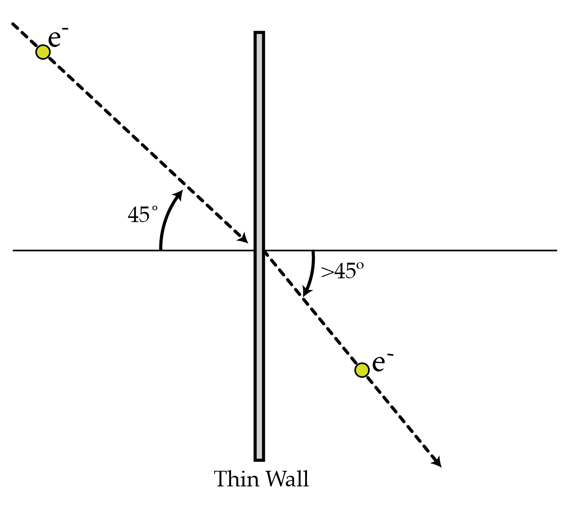Electron's refraction
An electron with kinetic energy moves in a region with constant potential . The electron strikes a flat thin wall at (measured with respect to the normal) and emerges in a different region with constant potential . As a result, the electron refracts. Find the direction in degrees of the electron's velocity (measured with respect to the normal) in the second region. Assume that the total energy of the electron is conserved as it passes though the wall.
Hint: You may model the thin wall as a parallel plate capacitor.

Details and assumptions
.
The answer is 52.2.
This section requires Javascript.
You are seeing this because something didn't load right. We suggest you, (a) try
refreshing the page, (b) enabling javascript if it is disabled on your browser and,
finally, (c)
loading the
non-javascript version of this page
. We're sorry about the hassle.
An electron passes through a thin wall. It assumed that energy is conserved for the electron. As a result, − V 1 e + K i = − V 2 e + K f .
When you solve for K f , you get K f = 4 e V .
Since there is a potential difference between the two sides of the thin wall, there is an electric field inside of the thin wall. The electric field is in the horizontal direction, so it only has an effect on the x-component of the initial velocity. The y-component of the velocity remains constant.
As a result, m 2 K i sin α = m 2 K f sin β
The m 2 cancels out on both sides, so you can solve for β
β = arcsin ( K f K i sin α )
You get: β = 5 2 . 2